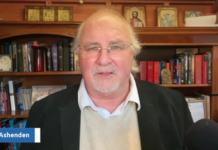Those who are of a certain age and follow the politics of the Church of England often feel trapped in a re-run of the 1980’s satirical sitcoms “Yes, Minister” and “Yes, Prime Minister”.
Sir Humphrey: “Bernard, if the right people don’t have power do you know what happens the wrong people get it – politicians, counsellors, ordinary voters.”
Bernard: “But aren’t they supposed to in a democracy “
Sir Humphrey: “This is a British democracy..”
Bernard: But how do you mean?
Sir Humphrey: British democracy recognizes that you need a system to protect the important things of life and keep them out of the hands of the barbarians. Things like the things like the Opera, Radio 3, the countryside, the Law, the universities – both of them.”
Taken from BBC Comedy Greats https://www.youtube.com/watch?v=xzfNEF0e-y4
The Church of England would appear to be a very British democracy. Yesterday the House of Bishops held an emergency meeting because there was a fear that their ‘system’ was breaking down because it had been infiltrated by barbarians.
The events that have precipitated this crisis are centred on the Crown Nominations Commission (CNC), the process by which new diocesan bishops are appointed. On two of the last eight occasions that they have met, they have ‘failed’ to make an appointment.
After the second ‘failure’ the Archbishop of Canterbury put out a press statement which said, “Together with the Archbishop of York and others, there will also need to be a period of reflection on the implications of this decision on the Church of England more generally.”
The use of the word ‘failure’ is surely indicative of the bishops’ sense of entitlement. Most organisations recognise that there are times when it is better not to appoint anyone than to appoint the wrong person. If it happened regularly, they would first consider whether or not the candidates were up to scratch and how they could improve their search criteria or shortlisting process. The bishops of the Church of England, on the other hand, just assume there must be something wrong with the selection panel. After all, it’s the bishops who invite people into the ‘talent pipelines’; it’s bishops who select the suffragan bishops, from whom many diocesan bishops are chosen; and it seems likely that the episcopal members of the CNC were content to appoint on both occaisions, otherwise there wouldn’t have been any “implications”.
In short, the bishops are frustrated that members of the laity and clergy have the temerity to disagree with them about who should join their number.
The Crown Nominations Commission (CNC) is a slightly complicated body. A new CNC is formed for each appointment. It is usually* made up of :
- the two archbishops (or a bishop nominated by them if they are unable to attend);
- six central members (one of each of six pairs elected by General Synod for a five year period);
- six local members (elected by and from the diocesan Vacancy in See Committee, who in turn are elected by diocese);
- and the Archbishops’ Secretary for Appointments and the Prime Minister’s Appointments Secretary who do not have a vote.
This means that no CNC is identical in make up, as can be seen here. Of the 14 voting members, the current standing orders state that ten have to vote in favour of an individual for an appointment to go ahead.
Since the current set of central members were elected, there have been eight CNCs. Three appointed liberal-leaning bishops, three appointed orthodox-leaning bishops and two failed to appoint. Some might say that in a divided church the process is working very well. But not the bishops, or the report that they commissioned, who in their largely progressive bubble act on the assumption that the orthodox are a noisy entryist minority.
The report, which informed the House of Bishops debate, made it very clear that the blame for the non-appointment lay with the membership of the CNC and that ways had to be found to circumnavigate the current process.
To be fair, the report upheld, if only grudgingly, the individual’s right to vote as they choose:
“… however difficult these things are, it is the prerogative of each individual member of a CNC to vote according to conscience in the way that they believe is best for the witness of the Gospel in the diocese being considered.” (para 8)
But just two paragraphs later, the ‘choices’ of those who refuse to vote with the majority were maligned:
“If the CNC process is to work well, and if the Church is to have confidence in it, those participating must have confidence that it is a discernment process under God and not one of pre-judgements, tribalism or politics, which is now the perceived fear across the breadth of traditions in the Church, but particularly from those who are under-represented in senior roles.”
These unevidenced accusations of “pre-judgements, tribalism and politics”, formed the basis of a complete overhaul of the voting process based on these four elements:
- Remove the secret ballot – A significant step because there are often several rounds of voting. This will not only leave people open to criticism from their colleagues after the end of the process, but it will allow pressure to be put on particular individuals to change their vote between rounds.
- Change the threshold required for a nomination and the removal of abstentions when calculating the vote – The current threshold is two-thirds of 14 – hence the need for 10 votes. If this is reduced to 60% then only 9 votes would be needed, however, if abstentions are no longer counted as ‘votes’ then it is possible that this number could be reduced and an individual could be selected who has the support of the archbishops but has less than 50% of the votes of the laity and clergy.
- Give the Presiding Archbishop additional vote should three consecutive votes between the final two candidates fail to meet the threshold for nomination – A very clear power grab, which undermines the role of the laity and clergy and increases the influence of the episcopate.
- The mandated resignation of the Central CNC members should they fail to make a nomination on three occasions during a five-year term – This places even more pressure on lay and clergy members of the CNC to vote with the majority. It seems that it is considered impossible that all six central members might agree about a candidate that is actually being blocked by the archbishops or local members. A situation could even be imagined when this would increase the level of politicking.
The Bishop of Oxford believed these changes would not go far enough and suggested a fifth proposal in the form of a “back-stop”:
“… for the selection of a name for submission to the Prime Minister to be made by a panel comprising (for example) the Archbishops and the five most senior diocesan bishops (by length of service) if the CNC does not select a name”.
The majority of bishops could see that at the very least this would be perceived as an episcopal power grab and so voted against this amendment.
Some bishops warned their colleagues about the consequences of their actions. The Bishop of Southwell & Nottingham, the Rt Revd Paul Williams, said that all the proposals, “plainly accrued more power to the archbishop”. Likewise, the Bishop of Rochester, Rt Revd Jonathan Gibb pointed to the need for time, thought and consultation with the central CNC members themselves. It seems few bishops were interested in his plea that, “At a time when trust is fragile, and at a premium in the Church, this is something that should be thought about very carefully.”
When it came to the vote on the main motion the majority ignored these warnings.
“That this House, regretting the difficulties in the recent CNC processes as set out in HB(24)30 welcome the recommendations as set out in paragraphs 12 to 14 of that paper and request that work be undertaken to bring the proposals to Synod.”
27 in favour, 9 against, 3 abstentions.
It is hard to interpret this vote as anything other than an attempt by the bishops to accrue power. The CNC chose to use their vote in a way that displeased the majority of the House of Bishops, so, change is needed. Questions are being asked in parliament and episcopal seats in the House of Lords may be at risk, so something has to be seen to be done.
But this is nothing new, an analysis of the events of the past couple of decases show that it is just part of an ongoing trend. While the legal framework of the Church of England is supposed to ensure that the voice of laity and clergy are respected, the bishops always seem to find a way to get what they want.
Consider the ‘choice’ of more than a third of the House of Laity to vote against the 2012 legislation to introduce women to the episcopate. Were their concerns heard? Were they thanked when ‘a better solution’ was found? Not at all – they were publicly lambasted, and privately hauled over the coals, before being excluded from the decision making process until the bishops had it all stitched up. The 2014 settlement involved a ‘Declaration’ of the House of Bishops which avoided synodical scrutiny to avoid the embarrassment of the ‘wrong’ choice being made for a second time.
Now, when a PCC ‘choose’ to use that very Declaration to pass a resolution asking their bishop to respect their theological convictions about the ministry of men and women, they discover that it is far from straightforward. Some bishops will not allow the Bishop of Ebbsfleet to minister in their diocese, others use interregnums to ‘guide’ the laity to consider the error of their ways. First, the PCC is asked to revisit their decision, and then, if they don’t change their mind, it is ‘suggested’ that it might now be difficult to fill the post and they may not get a vicar at all.
Then there is the fate of the PCC who ‘choose’ to use their limited funds to mend the church roof rather than pay their ‘voluntary contributions’ to diocesan coffers. It seems ‘voluntary’ no longer means ‘voluntary, because a few years later they are presented with a list of their ‘debts’ and told that unless they pay them it is unlikely they will ever have another vicar.
Sometimes the response is pretty feeble. In the Diocese of Truro, Save the Parish were villified, one presumes with the support of the bishop, for choosing to challenge the centralisation of ministry. Laughably they were ‘corrected’ for their decision not to include cathedral staff and bishops amongst those in ‘parish ministry’.
But at other times the choices people face are impossibly difficult; take the fate of the Orthodox Ordinands as an example. When nearly half the bishops expressed their desire to change the Church’s teaching and practice about human relationships, and the House of Bishops refused to make arrangements for ordinations by orthodox bishops, the ordinands were faced with a dilemma. Be ordained by a bishop they believed to be in serious error or walk away from their training, their curacy and their home. Few had the private means or a church with the money to employ them as a lay person, so very few walked away.
Barbarians may choose to act according to their conscience, but the bishops will always find a way to hold on to power. Yesterday’s vote was just another example.
Rt Revd Philip Mounstephen claimed that “The House does not decide for the CNC: that is the job of the General Synod,” but old hands know differently.
In February 2023, the House of Bishops presented a motion to General Synod introducing the Prayers of Love and Faith. There were 28 tabled amendments, 7 were not debated. Of the remaining 21, 20 were vetoed by the House of Bishops.
So, it is true, a motion will be presented to General Synod in February and there may even be an opportunity for debate, but that doesn’t mean General Synod will decide the future of CNC. If the bishops disapprove of any amendment, they will vote it down, just like they did when they introduced the Prayers of Love and Faith in February 2023.
Synod will be left with a binary decision: to keep the current system or accept the bishops’ proposals. Ironically, the bishops will be banking on ‘“pre-judgements, tribalism and politics” to deliver them a majority vote.
Sir Humphrey would be proud. This is indeed a very British democracy.
*There is an exception – when a new Archbishop of Canterbury is appointed (probably in 2026) there will be 17 members on the CNC to allow for greater representation from the rest of the Anglican Communion.



